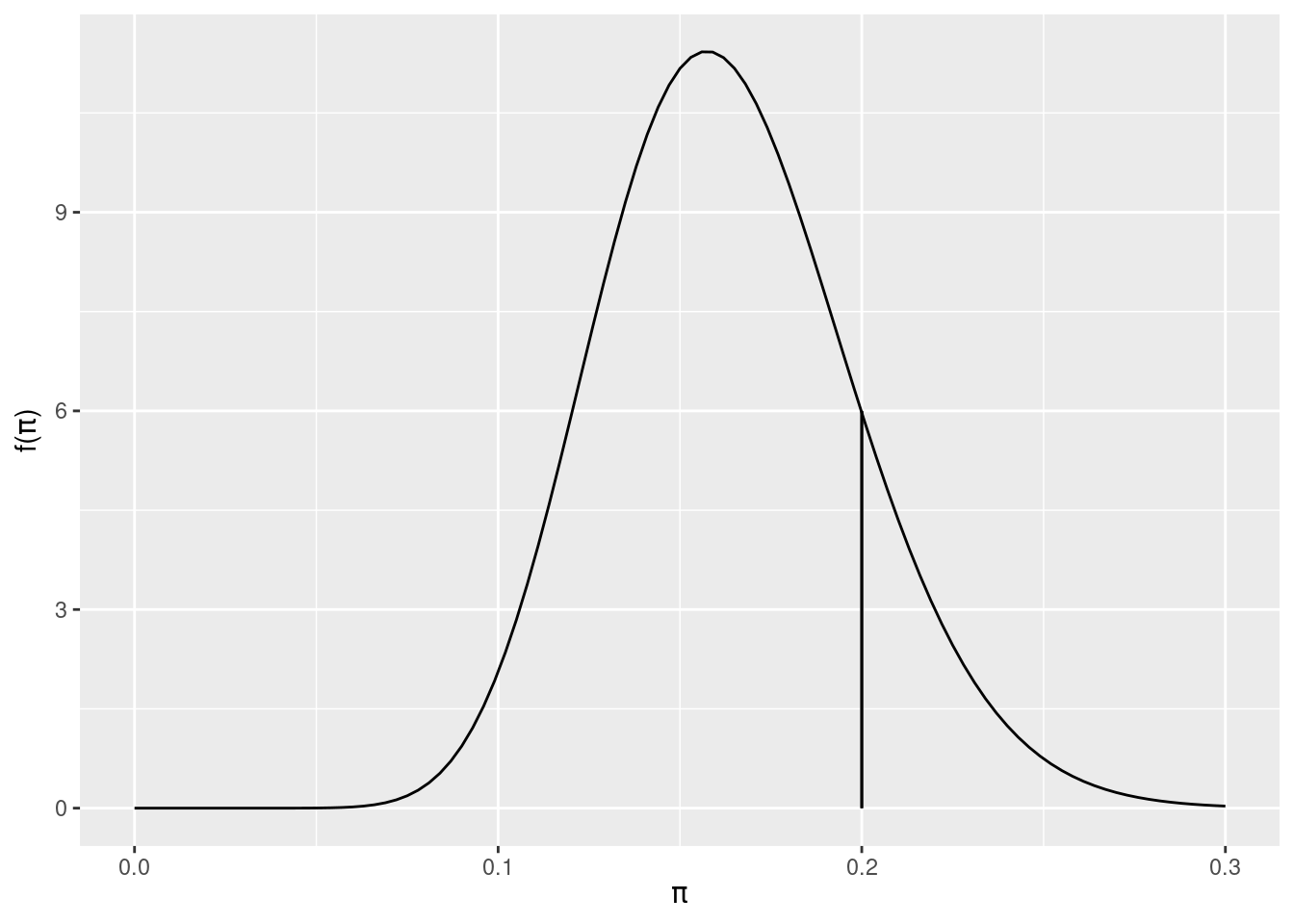8.3 Posterior hypothesis testing
Hypothesis testing:
\[H_0: \pi \geqslant 0.2\] \[H_a: \pi < 0.2\]
One-sided tests
To evaluate exactly how plausible it is that \(\pi<0.2\):
- calculate the posterior probability
\[P(\pi < 0.2|Y=14)\]
pbeta(0.20, 18, 92)## [1] 0.8489856
\[P(H_0|Y=14)=0.151\] \[P(H_a|Y=14)=0.849\]
\[\text{posterior odds}=\frac{P(H_a|Y=14)}{P(H_0|Y=14)} \approx 5.62\]
pbeta(0.20, 18, 92) / (1 - pbeta(0.20, 18, 92))## [1] 5.621883\[\text{prior odds}=\frac{P(H_a)}{P(H_0)} \approx 0.093\]
pbeta(0.20, 4, 6) / (1 - pbeta(0.20, 4, 6))## [1] 0.09366321\[\text{Bayes Factor}=\frac{\text{posterio odds}}{\text{prior odds}}\]
BF <- (pbeta(0.20, 18, 92) / (1 - pbeta(0.20, 18, 92))) / (pbeta(0.20, 4, 6) / (1 - pbeta(0.20, 4, 6)))
BF## [1] 60.02232\[BF=\left\{\begin{matrix} 1 & H_a\text{constant} \\ >1 & H_a\text{increased} \\ <1 & H_a\text{decreased} \\ \end{matrix}\right.\]
Two-sided tests
There’s not one recipe for success
\[H_0: \pi = 0.3\] \[H_a: \pi \neq 0.3\]